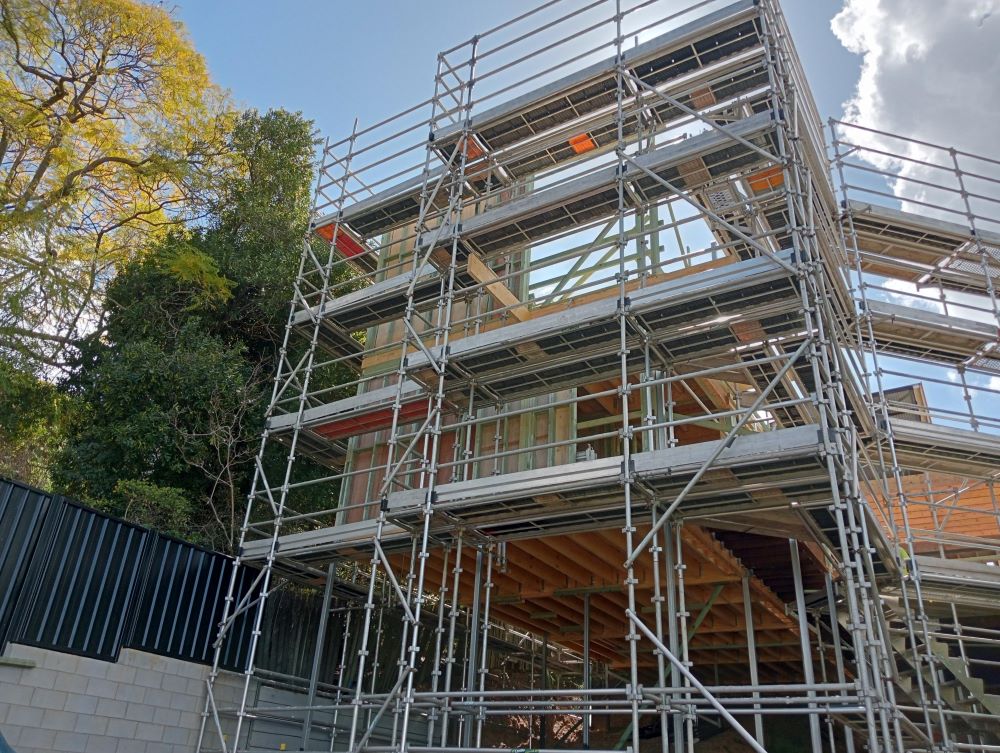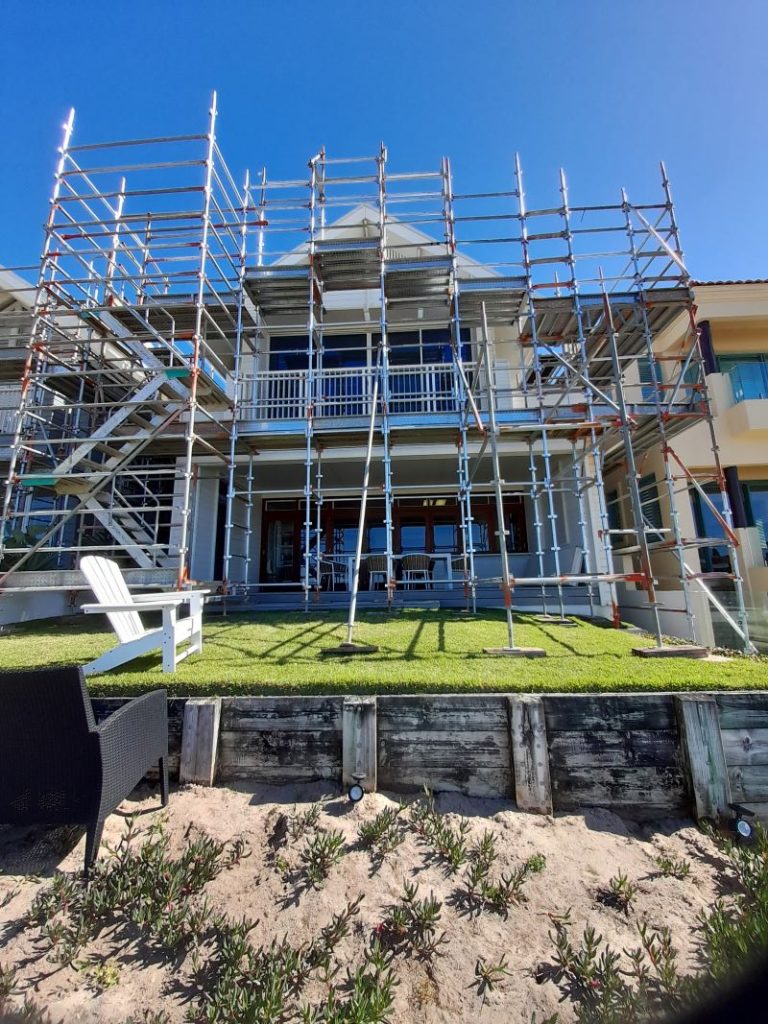Comparing Scaffold Materials: Aluminium and Steel for Your Project Needs
Choosing the appropriate scaffold for your construction or renovation project is crucial, and two of the most favored options are aluminium scaffold and steel scaffold. Each of these materials possesses distinct characteristics and benefits tailored to various project requirements. In this guide, we will delve into a detailed comparison of both options, highlighting their features and suitable applications.
When evaluating scaffold options, it’s essential to consider the unique advantages that aluminium and steel scaffolding offer. We will explore these aspects comprehensively to help you make an informed decision tailored to your specific project needs.

Discover the Unique Benefits of Aluminium Scaffold
Aluminium scaffold is celebrated for its lightweight nature and exceptional ease of handling, making it an optimal choice for projects that demand frequent relocation and rapid assembly. The components of aluminium scaffolding are significantly lighter compared to steel, which facilitates easier transportation and maneuverability at the job site. This advantage is particularly beneficial for contractors working in tight spaces or those who need to reposition scaffolding often.
Moreover, aluminium scaffold is renowned for its corrosion resistance. This attribute makes it ideal for outdoor applications or environments with elevated humidity levels, ensuring that the scaffold maintains its structural integrity and appearance over time. The corrosion-resistant properties contribute to the long-lasting performance of the scaffold, which is essential for projects exposed to harsh weather or moisture.
Setting up and taking down aluminium scaffolds is generally a quick and straightforward process, as the components are specifically designed for easy assembly. This efficiency can lead to significant time savings on the job site, especially for projects that operate under tight deadlines. By minimizing setup time, teams can focus more on completing their tasks efficiently.
Understand the Strength and Stability of Steel Scaffold
Steel scaffold is renowned for its superior strength and impressive load capacity, making it a highly durable option for construction projects that require robust support. This material is engineered to carry significant weight and withstand challenging conditions, providing a stable platform for workers even in the most demanding environments. Its rigidity and strength make it a preferred choice for projects involving heavy machinery or materials.
The durability of steel scaffold is a critical advantage, especially in extreme weather conditions or high-traffic areas where the scaffold may experience heavy usage. Unlike lighter materials, steel scaffold is designed to resist bending or deformation, ensuring a secure environment for workers at elevated heights. This reliability fosters a sense of safety and confidence among construction teams.
Furthermore, steel scaffold is recognized for its longevity and overall cost-effectiveness. Although the initial investment may be higher than that of aluminium, the extended lifespan and resilience of steel scaffolding make it a financially sound choice in the long run. This material can endure repeated use, resulting in fewer replacements or maintenance requirements over time.
When faced with the decision between aluminium and steel scaffolding, it is vital to evaluate the unique requirements of your specific project. Factors such as the weight of materials, the height and size of the scaffold needed, and the environmental conditions of the job site will greatly influence your decision.
Consulting with your scaffold hire company can provide invaluable insights, helping you select the most suitable option for your project’s demands. For additional information about when scaffolding is necessary and the projects that may require it, check out our article on when to hire scaffolding.
Essential Factors to Evaluate When Choosing Scaffold
When deciding between aluminium and steel scaffolds, it is crucial to consider several key factors. A thorough understanding of the strength and durability, weight and portability, and cost and affordability of each scaffold material will enable you to make a well-informed decision tailored to your project’s needs.
Evaluating Strength and Durability of Scaffold Materials
Both aluminium and steel scaffolds are known for their strength and durability; however, they exhibit different qualities that may influence your choice. Generally, steel scaffolds are regarded as having superior strength and load-bearing capacity compared to their aluminium counterparts. Steel’s robust composition allows it to withstand heavy loads and provides stability in challenging construction settings.
On the flip side, aluminium scaffolds are also strong and durable, but they may fall short in supporting extremely heavy loads. Therefore, assessing the weight requirements of your project is essential in identifying which scaffold material aligns best with your operational needs.
Comparing Weight and Portability Features
When it comes to weight and portability, aluminium scaffolds have a distinct advantage. The lightweight nature of aluminium makes these scaffolds significantly easier to handle and transport than their heavier steel counterparts. This feature is particularly beneficial for smaller-scale projects or situations where the scaffold must be repositioned frequently, as it reduces the physical strain on workers and enhances overall productivity.
While steel scaffolds may be heavier, they still offer some level of portability; however, they typically require more effort and manpower for transportation. Understanding the weight and portability considerations relevant to your project will help ensure efficient and safe scaffold usage throughout your operations.
Key Advantages of Choosing Aluminium Scaffold
When evaluating scaffold materials, aluminium scaffold presents several distinct advantages that make it a preferred choice for various construction and renovation projects.
Lightweight Design and Effortless Handling
One of the standout advantages of aluminium scaffold is its lightweight design. In comparison to steel scaffolding, aluminium is substantially lighter, which enhances its manageability and transportability. This characteristic not only facilitates faster assembly and disassembly but also contributes to a more efficient workflow, ultimately reducing the overall project timeline. Furthermore, the ease of handling significantly boosts worker productivity and minimizes the risk of accidents related to fatigue.
Exceptional Corrosion Resistance Properties
Aluminium scaffold showcases remarkable corrosion resistance, making it an ideal option for various environments. Unlike steel, which is prone to rust and deterioration, aluminium’s natural resistance to corrosion allows it to maintain its integrity even when exposed to moisture or outdoor elements. This feature is particularly advantageous for projects conducted in wet or humid conditions, ensuring the scaffold remains safe and effective over time.
Efficient Assembly and Disassembly Processes
Another significant benefit of aluminium scaffold is its quick assembly and disassembly capability. The lightweight components, combined with user-friendly connectors and locking mechanisms, streamline the setup process. This efficiency is especially valuable in time-sensitive projects or when scaffolding needs to be frequently relocated. The rapid assembly and disassembly of aluminium scaffold not only saves time but also helps reduce overall labor costs, providing an economic advantage for project managers.

Unmatched Advantages of Opting for Steel Scaffold
When selecting the right scaffold for your construction project, steel scaffold offers numerous benefits that make it a top choice for many contractors and builders.
Unrivaled Strength and Load Capacity of Steel Scaffold
One of the primary advantages of steel scaffold is its unparalleled strength and load capacity. Steel is well-known for its exceptional durability and ability to bear substantial loads. This characteristic renders it ideal for projects that require scaffolding to support significant weights. Steel scaffold systems are meticulously designed to provide a stable and secure platform for workers, ensuring their safety while working at elevated heights.
Exceptional Durability in Harsh Conditions
Steel scaffold is highly resilient against various environmental factors, making it suitable for use in extreme conditions. It can endure exposure to adverse weather elements, including high winds, heavy rain, and extreme temperature fluctuations. This durability guarantees that the scaffold remains stable and secure, creating a safe working environment for construction teams. Whether tackling projects like gutter replacements or other tasks that demand scaffolding in challenging conditions, steel scaffold is built to withstand the rigors of the job.
Cost-Effective Longevity of Steel Scaffold
Steel scaffold is widely recognized for its longevity and cost-effectiveness. The inherent durability of steel ensures that the scaffold can withstand numerous construction projects over extended periods. Unlike other materials, steel scaffold does not degrade easily, leading to reduced needs for frequent replacements or repairs.
To determine the most suitable scaffold material for your specific project, it’s essential to assess your needs carefully, consult with industry professionals, and take into account both safety standards and budgetary constraints.
Making the Right Choice: Selecting the Ideal Scaffold for Your Project
Choosing the right scaffold for your project requires careful assessment of your unique needs. By thoroughly evaluating your project requirements, consulting with professionals, and considering safety and budget constraints, you can make a well-informed decision that aligns with your operational goals.
Thoroughly Assessing Your Project Requirements
Begin by evaluating the specifics of your project and the tasks that necessitate scaffold support. Key considerations include the height and layout of the structure, the anticipated duration of the project, and any specialized requirements that may arise.
For instance, scaffolding for an apartment complex will have distinct specifications compared to scaffolding or guard rail for gutter replacement. By thoroughly understanding your project needs, you can determine the appropriate type and configuration of scaffold that will best suit your operational objectives.
The Importance of Consulting with Scaffold Professionals
Engaging with experts such as Cando Scaffolding is highly recommended when navigating the complexities of scaffold selection. Our extensive experience in the industry ensures that you receive valuable guidance, helping you meet safety standards and regulatory requirements throughout your project.
Contact us today or request a quote to embark on the right path towards selecting the ideal scaffold for your project.



It’s fascinating to see the advantages of both aluminium and steel scaffolding clearly laid out. I’ve personally worked with aluminium scaffold on a few projects, and its lightweight nature made moving it around a breeze, especially in tighter spaces. I find that this flexibility can be a huge time-saver on site.
It’s interesting to see how the choice between aluminium and steel scaffolding can really impact a project’s efficiency. In my experience, the lightweight nature of aluminium makes a huge difference, especially on tighter jobs where space is limited and constant movement is needed. For example, I worked on a small commercial renovation where we were constantly shifting the scaffold as new areas opened up. Aluminium just made it so much easier!
It’s great to hear about your experience with aluminium scaffolding in tight spaces. I can definitely see how the lightweight aspect would make a significant difference, especially in a fast-paced environment like a commercial renovation. It’s remarkable how sometimes the choice of materials can affect not just efficiency, but also safety and worker well-being.
I really appreciate your perspective on the impact of material choice in construction. It’s interesting to think about how something as simple as scaffolding can enhance not just efficiency but also the overall working environment. In fast-paced commercial renovations, those lightweight aluminium structures can change the game; they make it easier to maneuver in tight spaces, which can significantly reduce the stress on workers physically.
You hit the nail on the head with that observation about scaffolding. It’s wild how something that seems like a piece of the construction puzzle can really influence the whole operation. Lightweight aluminium scaffolding is a game changer, for sure. When you’re in a cramped space, every little bit of maneuverability matters. It’s not just about getting the job done; it’s about how efficiently and safely you can do it.
It’s great to hear about your experience with aluminium scaffolding on that renovation project. The lightweight aspect really does make a difference when space is tight and constant adjustments are needed. It sounds like it helped streamline your workflow, which can be crucial in keeping projects on track.
You bring up a really important point about the efficiency that the weight of materials brings to a project. The lightweight nature of aluminium can definitely streamline workflows, especially in tight spaces or during renovations where flexibility and frequent adjustments are necessary. I’ve seen how, in those scenarios, every little bit of extra effort to move or reposition scaffolding can add up to significant time lost across the project.
You’re spot on about the benefits of aluminium scaffolding, especially in tight spaces. Its lightweight design really does change the game when you’re constantly shifting around, like in your commercial renovation project.
You hit the nail on the head with that point about lightweight design. Using aluminium scaffolding really opens up a lot of options when working in cramped areas. It makes such a difference when you’re trying to get into those tricky spots without feeling like you’re wrestling with your gear.
Ah, the great scaffold debate—Aluminium vs. Steel. It’s like the Montagues and Capulets of the construction world. On one hand, you’ve got the sleek, lightweight charms of aluminium, priding itself on its ability to be moved around like a seasoned dance partner. I can almost picture a construction crew waltzing around with those lightweight frames, swapping them in and out faster than a game of musical chairs. Seriously, though, for anyone who’s ever tried lugging around a heavy steel scaffold—it’s like trying to carry an angry rhinoceros through a narrow hallway. You might think you’re getting a workout, but let’s be honest, nobody signed up for that kind of amusement.
You’ve captured the essence of the aluminium vs. steel debate perfectly. It really is a classic clash in the construction world. Aluminium does have that appeal with its portability and ease of handling. It’s interesting how that efficiency can streamline a project, allowing teams to adapt quickly. You can almost see a construction crew adapting to dynamic needs like dancers on a stage.
It’s interesting to see how the choice between aluminium and steel scaffolding can impact the efficiency of a project. I’ve worked on several renovation projects where we opted for aluminium scaffolding, and its lightweight nature really made a difference in reducing manual strain and speeding up assembly. It’s fascinating to think about how these tiny decisions can not only affect productivity but also worker safety. With advancements in technology, are there innovations on the horizon that might further enhance these materials’ properties? I wonder how the environmental impact of sourcing and processing these metals factors into long-term project planning. I’m looking forward to seeing how other readers and professionals weigh in on their experiences!
It’s true that the choice between aluminium and steel scaffolding can have such a significant influence on project efficiency and worker well-being. I’ve seen firsthand how much lighter aluminium can be, which not only speeds up assembly but also helps reduce fatigue among crew members. It’s like choosing the right tool for the job—just makes everything flow so much better.